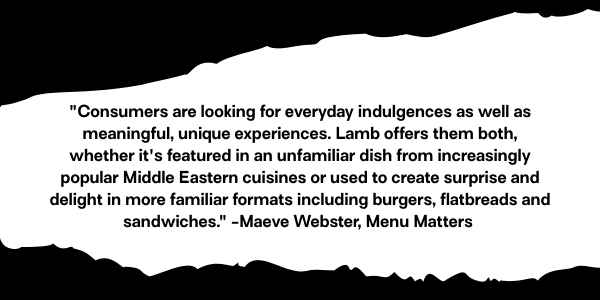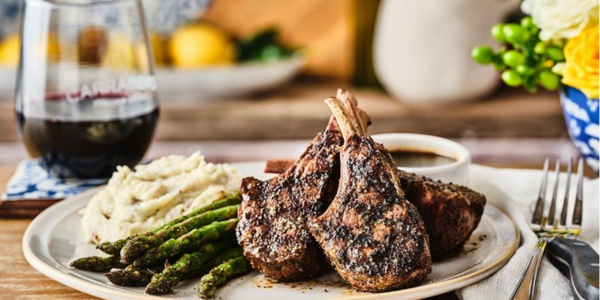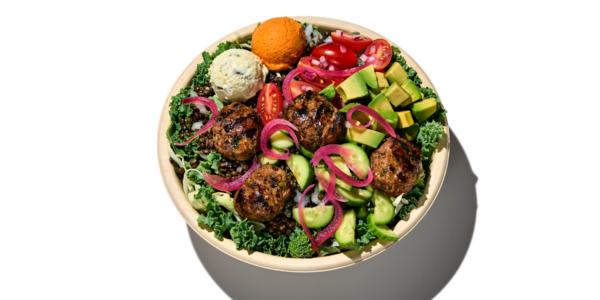At Aussie Beef & Lamb, we keep a close eye on the lamb category here in North America to see what’s trending, where we are with consumer sentiment and behavior, and what’s happening on the menu. We know that sales of lamb are up and imports to North America from Australia are at record levels, but what’s driving the volume? We tapped our mates at Menu Matters to dig into the data – let’s take a look at what they found, and the opportunities for foodservice operators!
A social listening study undertaken by Menu Matters for Meat & Livestock Australia (MLA) last year showed a slight uptick in online conversations about lamb over the prior year. Notably, away from home experiences show up as an important factor. As restaurants tend to deliver positive experiences with lamb, foodservice adoption and menuing of lamb helps consumers build familiarity and preference. Add in storytelling and certifications for pasture-raised, grass-fed or halal that Australian lamb brings to the meat case and the menu, and you start to see the power of provenance. Both in foodservice and at home, lamb’s ability to add a touch of affordable luxury, specialness and something different than the everyday occasion is its superpower.

The menu data shows lamb making moves towards the mainstream, casual occasions. While it remains strongest at independent restaurants, there is real menu growth and versatility in casual dining restaurants and regional chains. In just the past year, chains like Cava, Tony Roma’s and Carrabba’s all launched new items and LTOs with lamb. From Cava’s spicy lamb bowl to a braised shank at Tony Roma’s, or wood-grilled chops at Carrabba’s, operators are finding many pathways for lamb on the menu.

Tuscan grilled lamb chops at Carrabba’s

Spicy lamb meatball and avocado bowl at Cava
Food & flavor trends play into this as well – Indian, mediterranean and middle eastern restaurants are most likely to menu lamb, and are all trending cuisines with established and growing populations here in North America. Among more common restaurant types, steakhouses and Italian restaurants are most penetrated by lamb. These restaurants are often using value cuts of lamb from ground to leg and shoulder, and often in more approachable, familiar ways. Think lamb pastas, pizzas, stews and curries, and also the surprising growth engine of sandwiches, where new entrants in lamb charcuterie may be making headway.
We’ll take a look at the another red meat category in an upcoming edition. Stay tuned!

